19 Nights / 20 Days
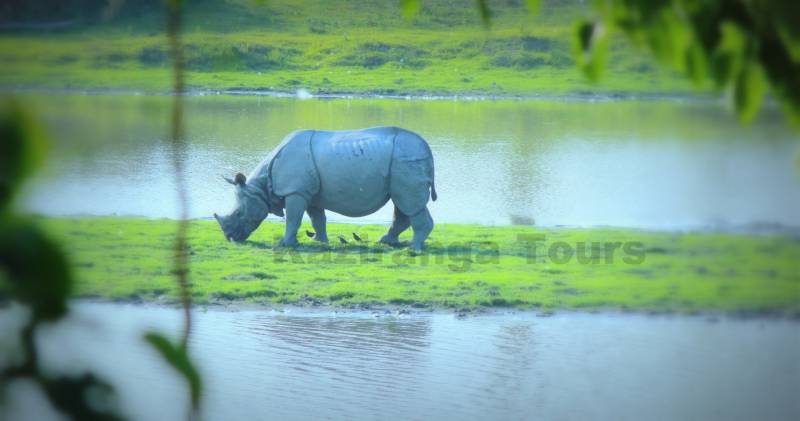
This tour is a mix of both popular destinations and remote places of Northeast India, and is a great way to start exploring the region’s richness and secrets, through biodiversity rich rain-fed forests, grasslands, mountain landscapes and also remote tribal villages where indigenous tribespeople live a simple and sustainable lifestyle.
It covers the wildlife areas in the state of Assam, along with cultural experiences with the tribes in Arunachal Pradesh and Nagaland. By the end of the many safaris and nature treks of the tour, you would have encountered a myriad species of wildlife such as rhinos, elephants, leopards, flying squirrels, deer, elephants and otters to name a few. The variety in bird-life of the region is equally spectacular with many hundreds of species of birds and numerous colorful migratory birds. And then there are chances of seeing a fascinating river dolphin or perhaps even the majestic tiger. In total, you will be visiting five of the best national parks of the region, namely Kaziranga National Park, Manas National Park, Nameri National Park, Dibru-Saikhowa National Park and Namdapha National Park. Of these, Manas and Kaziranga are UNECO World Heritage Sites which nature lovers across the world routinely visit. The variety in vegetation and landscape of these natural places will leave you immersed in their beauty, from deciduous forests, tropical and sub-tropical forests, grasslands, islands and rainforest in the foothills of the eastern Himalayas. Trekking through the dense rainforest of Namdapha and camping in the beautiful riverside locations is also an incredible experience of being surrounded by pristine greenery.
Amongst the tribes, you will meet various tribes of Assam such as Mishing, Deori and Sonowal Kachari on the spiritual island of Majuli which is located in the middle of the mighty Brahmaputra River. Experience a rural stay in traditional bamboo cottages and also relish the ethnic delicacies. One can also enjoy traditional dance performances of the tribes. In the quaint Himalayan valley of Ziro in central Arunachal Pradesh, you will get to meet and interact with the Apatani tribespeople who are one of the most fascinating tribes of India. They have various intriguing customs, such as the Apatani women who wear huge nasal plugs and have facial tattoos. It would also be a memorable experience to learn from them about their ancient religion and folklore. Lastly, in the faraway villages of remote Mon district in the hills of Nagaland, you will live amongst the tattooed Konyak tribe who are again a very fascinating tribe. They follow a very traditional way of life and were once headhunters and are considered to be one of the fiercest tribes of Northeastern India.
Experience an incredible long road trip across jungles, valleys and mountains crossing right through the heart and breadth of Northeast India, and discover both the fascinating cultures and environment that make this region so beloved.
After Arrival At Guwahati Airport, Drive to Manas National Park (5hrs), a Unesco World Heritage Site Which is Famous for Spotting Tigers. Afternoon Can Be Spent Visiting Nearby Fatemabad Tea Estate and Villages of Bodo Tribe. Enjoy Your Stay At a Luxurious Jungle Retreat or in Beautiful Eco-tourism Cottages Run By the Local Community Who are Associated with Wildlife Conservation and Nature Awareness.
At sunrise, go for an elephant safari in the central Bansbari Range. After breakfast, embark on a long jeep safari (4hrs) in the core area up to Beki River near Bhutan border. Catch a glimpse of Gaur (Indian bison), Giant flying squirrels, Sambar deer, Golden Langurs and birds such as Cranes, Hornbill, Trogon, Babbler and other foothill birds. Witness the amazing diversity of sub-Himalayan wildlife in the dense forests of Mathanguri range and also enjoy the scenic landscape of the surrounding hills. Picnic lunch can be also arranged by the riverside. Wild tuskers migrating to Royal Manas National Park in Bhutan can be sometimes seen on the other side of the river. Return to lodge by sunset and rest in the evening.
After Breakfast, Drive to Nameri National Park (9hrs), Located Near the Scenic Foothills of Arunachal Pradesh. the Streams and Swamps Around Nameri Makes It a Good Destination to Spot Migratory Birds. the Rare White Winged Wood Duck, the State Bird of Assam Can Be Spotted Here. the Eco-tourism Lodges Here are Involved with Conservation Projects, Sometimes They also Organize Wildlife Programs for the Guests. the Surroundings Look Beautiful During Winter with Mustard Flowers Blooming and the Sight of the Snowcapped Himalayas in the Background.
Early in the Morning, Go for a Guided Nature Walk for Birding. Walk Through the Canopy of Old Trees to Spot Birds such as Imperial Pigeon, Ibis Bill, Himalayan Kingfisher, Black-necked Cranes and Many More Species of Birds from the Watch Towers. It is also Sometimes Possible to See Pygmy Hog, Wild Boars, Hog Deer, Elephants, Bears and Gecko Lizards During the Forest Trek. Return for Breakfast, Then Travel Uphill to Ziro (9 Hours) in Arunachal Pradesh, It is a Beautiful Himalayan Valley Located At An Altitude of 1500m. the Countryside of Ziro is Surrounded By Evergreen Forests, Terraced Rice Farms and Misty Mountains. Ziro is the ��Ӱֱ�� of the Apatani Tribe. the Indigenous Apatani Women are Renowned for Their Nose Plug and Indigenous Tattoos. Ziro Has Been Listed for Nomination as Unesco World Heritage Site for Its Unique Culture. Enjoy Your Rural Stay with An Apatani Family and Experience Their Ethnic Cuisine.
Spend the next two days visiting homes and interacting with Apatani people in villages such as Hong, Hari, Baro and Siiro. The villages still have traditional wooden houses built on stilts, the villages are compact with houses built close to each other as the Apatanis often faced raids from the fierce neighbouring tribes. The Lapan is a platform at the centre of every village which serves as the point of gathering for all occasions, tall Babo totem poles can be also seen in front of most houses. One can also go for a hike in the bamboo and pine plantations of the Apatani villages. A visit to the terraced farms to see their wet rice cultivation system and fish farming can be very interesting. Also visit a shrine of Donyi Polo religion, the indigenous faith of the Apatani people.Later, visit the local market at Hapoli town and enjoy the panoramic view of Ziro valley from the landscape viewpoint at Hapoli.
Spend the next two days visiting homes and interacting with Apatani people in villages such as Hong, Hari, Baro and Siiro. The villages still have traditional wooden houses built on stilts, the villages are compact with houses built close to each other as the Apatanis often faced raids from the fierce neighbouring tribes. The Lapan is a platform at the centre of every village which serves as the point of gathering for all occasions, tall Babo totem poles can be also seen in front of most houses. One can also go for a hike in the bamboo and pine plantations of the Apatani villages. A visit to the terraced farms to see their wet rice cultivation system and fish farming can be very interesting. Also visit a shrine of Donyi Polo religion, the indigenous faith of the Apatani people.Later, visit the local market at Hapoli town and enjoy the panoramic view of Ziro valley from the landscape viewpoint at Hapoli.
Drive downhill to Dhunabari Ghat (7 hours) and catch the ferry across Subansiri River to MAJULI, the biggest river island in the world and a well preserved spot for Assamese and tribal culture. Arrive by afternoon and spend the rest of the day leisurely exploring the vast island and the beautiful countryside. The large wetlands and lakes on the island also attract many birds which interest many ornithologists, enjoy the spectacular sunset by the riverside. Enjoy a rural stay, relish the ethnic Mishing cuisine and also try the local brew, Apong. Traditional Mishing dance performance can be arranged upon prior request. Your stay will be in a traditional bamboo cottage with basic amenities.
Visit few of the old Assamese monasteries of 17th century such as Auniati, Kamalabari, Dakhinpat Sattras, built by the followers of the medieval saint Srimanta Sankerdev. Here, the monks learn a unique form of art, drama, music and Neo-Vaishnavite philosophy which was started by Sankardev. Visit the mask making center at Samuguri Sattra where extremely elaborate traditional masks are made by the monks for the Bhaona (dance dramas) which depict scenes from Hindu mythology. Also visit Salmara potters’ village, unique on the island, where potters make earthenware without the use of potter’s wheel! Try your hand in pottery and sculpting with riverine clay. In the afternoon, visit villages of the Mishing tribe, the indigenous inhabitants of the island. Visit their homes, interact with the villagers and observe their traditional lifestyle. One can also learn weaving in the traditional hand-looms.
Catch the Return Ferry in the Morning to Nimati Ghat and Drive to Hoolongapar Gibbon Sanctuary (3 Hours) Near Jorhat, a Unique Habitat Dedicated to Gibbons. Go for a Guided Nature Walk Accompanied By a Naturalist to See the Various Species of Primates such as Hoolock Gibbons, Assamese Macaque, Capped Langurs, Pig-tailed Monkeys, Slow Loris, Etc. One Can also See a Variety of Butterflies. After Lunch, Proceed to the Biodiversity Hotspot of Kaziranga National Park (2 Hours), the Main Destination for Wildlife in Northeast and is Famous for the One-horned Rhino. Kaziranga Was Declared a Protected Forest Area By Viceroy Lord Curzon in 1904 and Later Became An Unesco Heritage Centre for Its Unique Environment. After Arrival, Check-in At a Boutique Jungle Lodge or in a Luxurious Resort and Relax.
In the morning, enjoy an elephant safari in the popular Central Range at Kohora to see the rhinos from up close. Then, go on a guided jeep safari in the dense forests of Eastern Range, which is a good opportunity to see the migratory birds and sometimes tigers on the banks of Brahmaputra. River Dolphins, wild ducks and turtles can be also seen in the riverside. After lunch, proceed for another jeep safari in the Western Range to see the Wild Buffaloes, Elephants, Swamp deer, sloths, Jungle cats, mongoose and birds such as Pelican, Parakeets, Fish Eagle and Drongos. Govt run elephant safari seats are subjected to availability.
After breakfast, travel to MON (9 hours) in the Patkai hills of northern Nagaland. Mon can be considered as one of the most remote regions of eastern India and is the home of the fierce head hunting Konyak Tribe, known for their tattooed faces, wood carving and gun-making skills. The Konyaks can be easily recognized from the other Naga tribes for their tattooes earned from their head-hunting expeditions, which stopped only in the 1960s. Your stay will be in a boutique farmstay at Shiyong Village two hours from Mon town.
After breakfast, travel to the remote eastern corner of India to Longwa Village (2 hours), half of which falls in Myanmar. Visit the home of the Angh (village chieftain), whose house interestingly is divided by the border. Interact with the chief and other Konyak families to learn about their rich history and culture. See their local crafts and war trophies collected in the Morungs (dormitories), where young children were taught their traditions. The Morungs also have large log drums which are used to alert the villagers. One can also purchase beautiful tribal ornaments and interesting metal crafts souvenirs from the villagers. Explore the countryside, walk down their farms where they practice Jhum cultivation. Later, return to Mon by evening.
Visit few nearby Konyak villages such as Hongphoi, Wangla, and Old Mon. A good opportunity to observe the Konyak lifestyle, tribal arts and crafts. In Hongphoi, it is easy to see village elders with tattooed warrior faces. Visit the houses of the chiefs, which are decorated with skulls of wild buffaloes and other hunted animals. Elderly villagers with tattoos can be sometimes seen gathering at the chief’s house or making bamboo crafts in the Morungs nearby. An old world charm exists as the long-houses are very traditional, constructed in ancient Konyak way of using palm leaves roofing and jutted main pillars. Many villagers also continue to live their old traditional lifestyle.
After Breakfast, Drive to Tinsukia (7 Hours) Near Dibru-saikhowa National Park, An Interesting Birding Destination to See Wetland Birds. the Swamps of Dibru-saikhowa Were Initially Declared a Protected Forest for the Conservation of Few Endangered Avifauna Species But Has Slowly Emerged as a Prominent Biodiversity Hotspot. Check-in At a Business Hotel in the Town or Enjoy a Luxurious Tea Garden Stay Close to the Reserve.
Leave early morning for birding to Dibru-Saikhowa National Park, a unique biodiversity region located in an island. Enjoy a boat ride in Magori-beel, a lake rich in birdlife, with many wetland birds such as Greater Adjutant Stork, Griffon Vulture, Crested Serpent Eagle, Spot-Billed Pelican, Bengal Florican, Jardon’s Babbler, Black Breasted Parrotbill etc. Later go for a river safari in the Brahmaputra to the interiors of Dibru-Saikhowa where you may come across river dolphins. Go for a walk in the forested islands. Good chances of seeing the rare White-winged wood Duck, the state bird of Assam and the wild Ferral horses.
Drive to Distant Town of Miao Near Deban (6 Hours), the Entry Point of Namdapha National Park in Eastern Arunachal Pradesh. En Route Cross Numerous Tea Plantations and the Fertile Countryside of Assam. One Can also Visit the World War Ii Memorial, Digboi Oil Refinery Museum and Miao Buddhist Vihara On the Way. Namdapha is a Dense Rainforest Along the Banks of Noa-dihing River and also Has Temperate Vegetation in the Higher Altitudes. It is the Third Largest National Park in India in Terms of Area and Extends Into Myanmar as Well. Namdapha is also the Only Wildlife Park in the World Which Has Four Species of Big Cats: the Tiger, Leopard, Clouded Leopard and Snow Leopard. Though the Sanctuary Was Initially a Tiger Reserve, It Later Became Better Known as a Birding Hotspot Due to the Large Number of Rare Birds Which Can Be Seen in this Remote Forest. Your Stay Will Be At the Cozy Forest Guesthouse with Basic Amenities.
After breakfast, start trekking deep inside Namdapha towards Hornbill Camp (3 hours) accompanied by forest guide and porters. Set up tents after reaching and rest. Rest of the day will be free to explore the forests for birding around the campsite. A large number of Hornbills can be seen perched on the trees here. The biodiversity of the rainforest is amazing and unique, where hundreds of birds have so far been recorded and equally fascinating mammalian diversity. The forest hike is a good opportunity to be surrounded by an astounding rainforest biodiversity insects, animals, plants and fungi species. Bonfire can be arranged in the evening. Your night stay will be in tents.
Continue trekking through the dense undergrowths of ferns, bamboo canes, moss and wild bananas up to Happy Valley (2 hours), a beautiful camping site by the riverside. Enjoy a picnic lunch at the idyllic spot which offers a spectacular view of the virgin forests and the distant mountains. Afternoon will be free for birding, spot birds such as Hill Partridge, Green Cochoa, Ward’s Trogon, Pied Falconet, Leaf Warblers and also many migratory birds. The Flying Squirrel can be also seen easily in Namdapha and there are also chances of sighting the shy Hoolock gibbons. Your night stay will be in tents, enjoy the sound of the stream flowing by and melodious chirping of birds in the surroundings.
Trek back to Deban (1 hour) in the morning and bid farewell to the porters and forest guide. After breakfast and a little rest, drive to DIBRUGARH (7 hours), an important tea centre of Assam. Check-in at the old Gymkhana Clubhouse with modern amenities or in a colonial styled heritage bungalow with luxurious amenities in a nearby tea garden. Evening will be free to relax comfortably or visit the local market to purchase some fine Assam tea as memorabilia.
After breakfast, transfer to airport for departure. End of tour.
Greener Pastures is a small sustainable travel company based in Northeast India which promotes responsible tours and adventures to exotic places, with a prime focus on uplifting local communities and safeguarding the environment. Read More...
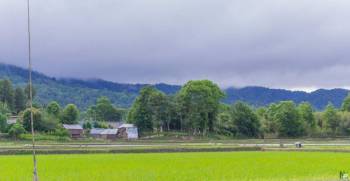 5D/4N
5D/4N
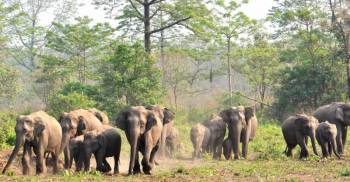 4D/3N
4D/3N
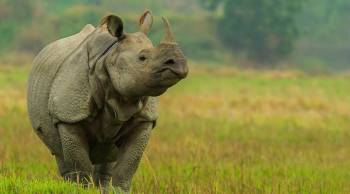 4D/3N
4D/3N
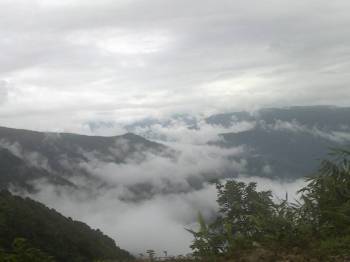 4D/3N
4D/3N
 8D/7N
8D/7N
Exotic Cuisines and Northeast India Blis..
Guwahati - Shillong - Kaziranga - Kohima - Mawlynnong
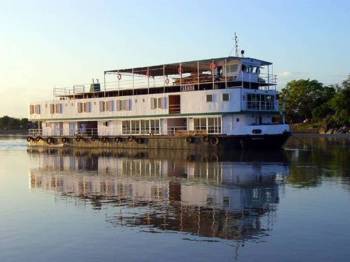 8D/7N
8D/7N
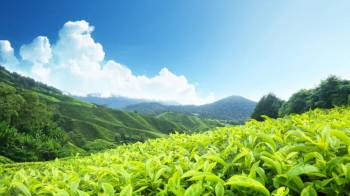 6D/5N
6D/5N
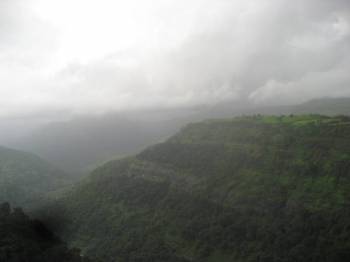 8D/7N
8D/7N
Monsoons in the Abode of Clouds Tour Pac..
Guwahati - Shillong - Cherrapunji - Mawlynnong
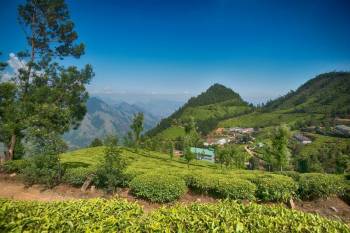 9D/8N
9D/8N
Tea Plantation Stays in Assam Tour Package
Dibrugarh - Guwahati - Sivsagar - Mancotta - Gatoonga - Adabarie
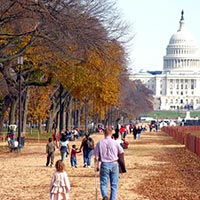 20D/19N
20D/19N
Classique America with Seattle & Alaska ..
Las Vegas - Los Angeles - Washington - Pennsylvania - New York - San Francisco - Se..
 20D/19N
20D/19N
Agra - Jaipur - Ranakpur - Jodhpur - Jaisalmer - Bikaner - New Delhi - Chittorgarh ..
 20D/19N
20D/19N
 20D/19N
20D/19N
 20D/19N
20D/19N
New York - Las Vegas - Los Angeles - San Francisco - Washington - Orlando - Harrisb..
 20D/19N
20D/19N
 20D/19N
20D/19N
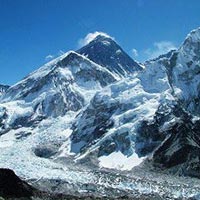 20D/19N
20D/19N
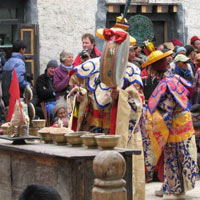 20D/19N
20D/19N
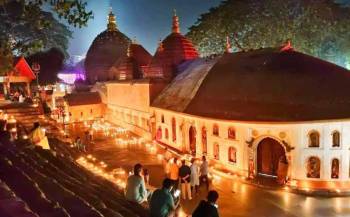 8D/7N
8D/7N
8 Days Guwahati - Kaziranga - Shillong -..
Guwahati - Shillong - Kaziranga - Dawki
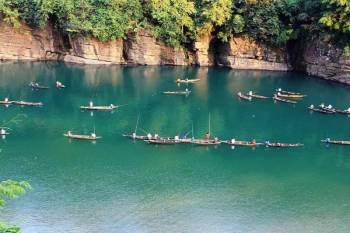 8D/7N
8D/7N
8Days Kaziranga - Shillong - Cherrapunji..
Guwahati - Shillong - Cherrapunji - Kaziranga
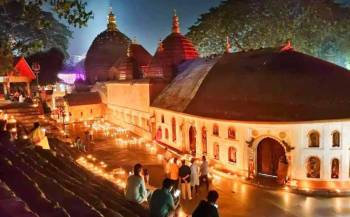 8D/7N
8D/7N
Shillong-Dawki-Kaziranga-Guwahati Tour P..
Guwahati - Shillong - Kaziranga - Dawki
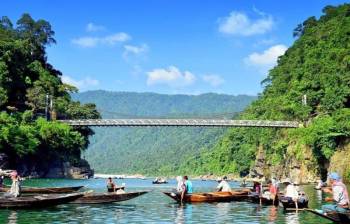 8D/7N
8D/7N
7 Night And 8 Days Assam Tour Package - 2
Guwahati - Shillong - Kaziranga - Dawki
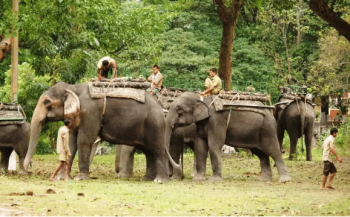 8D/7N
8D/7N
7 Night And 8 Days Assam Tour Package - 1
Shillong - Cherrapunji - Kaziranga - Guwahati
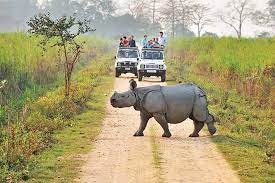 8D/7N
8D/7N
7 Night 8 Days Guwahati - Shillong - Che..
Guwahati - Shillong - Cherrapunji - Kaziranga
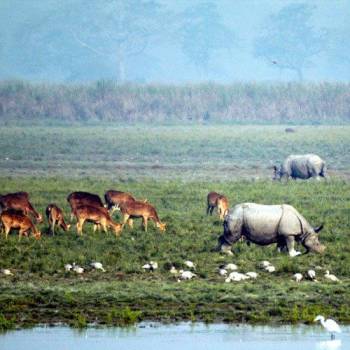 8D/7N
8D/7N
7 Night Kaziranga - Shillong - Cherrapun..
Guwahati - Shillong - Cherrapunji - Kaziranga
 8D/7N
8D/7N
Assam Tour Package 7 Night - 8 Days
Guwahati - Shillong - Cherrapunji - Kaziranga
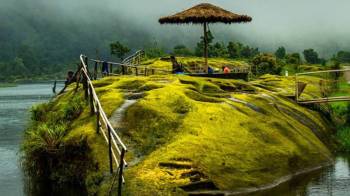 8D/7N
8D/7N
Assam Tour Package 7 Night - 8 Days
Guwahati - Shillong - Cherrapunji - Kaziranga